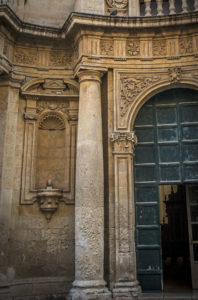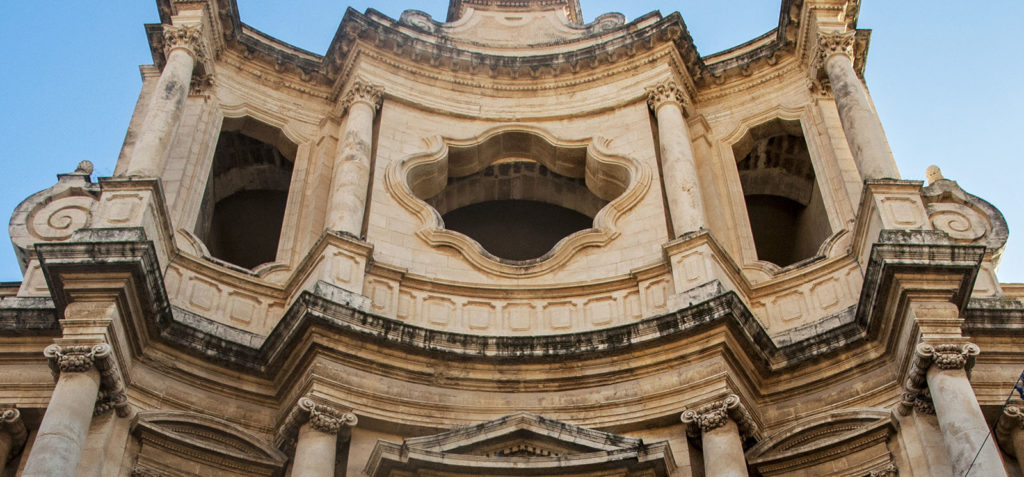
The final element that gives vertical thrust to the long elevation on the Corso is the façade of the church of San Carlo, located on the left corner of the block.
The façade is formed of five bays of which the three central ones are taller than the cornice, the unifying element of the elevation.
The dynamism that distinguishes the structure can be seen in the concave
mixtilinear
shape that protrudes forward towards the street, bringing it out of alignment with the convent’s elevation.
The façade is divided into three levels with free-standing columns surmounted by
Doric order
capitals in the first section,
Ionic
in the second, and
Corinthian
in the third. The central part has openings and niches on each level: the finely decorated entrance portal flanked by two niches with a
broken tympanum
, the large central window surmounted by a triangular
tympanum
and niches with a curved tympanum and the three openings on the last level.
All this gives the elevation a dynamism and alternation of full and empty spaces.
The building material used is local lime in golden hues.
